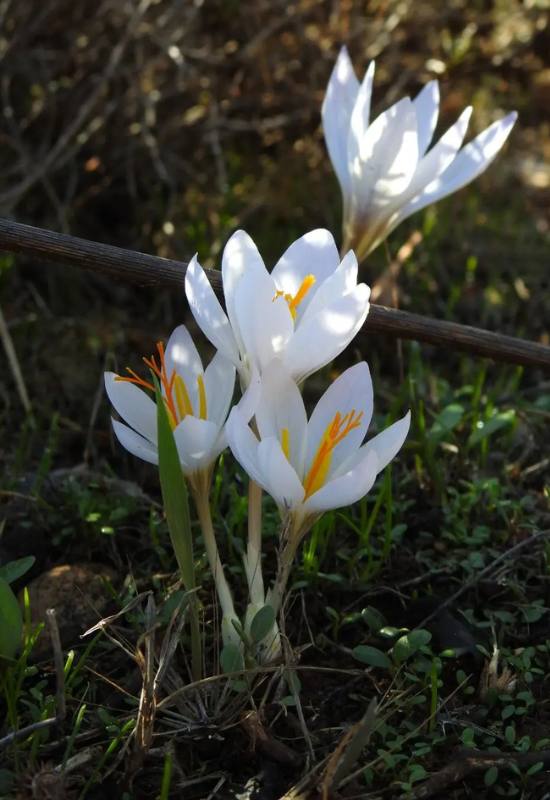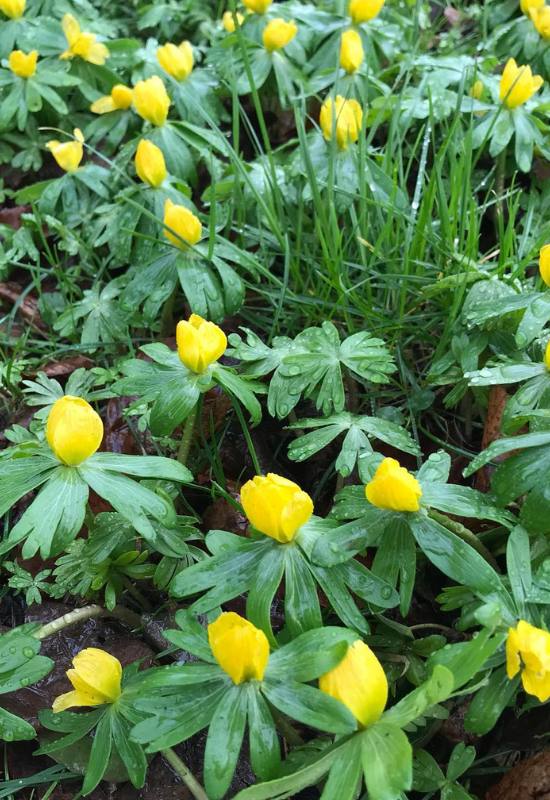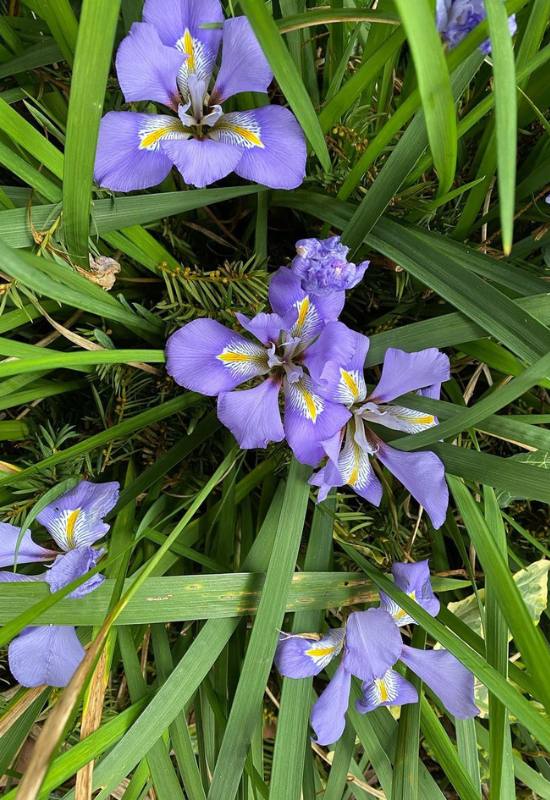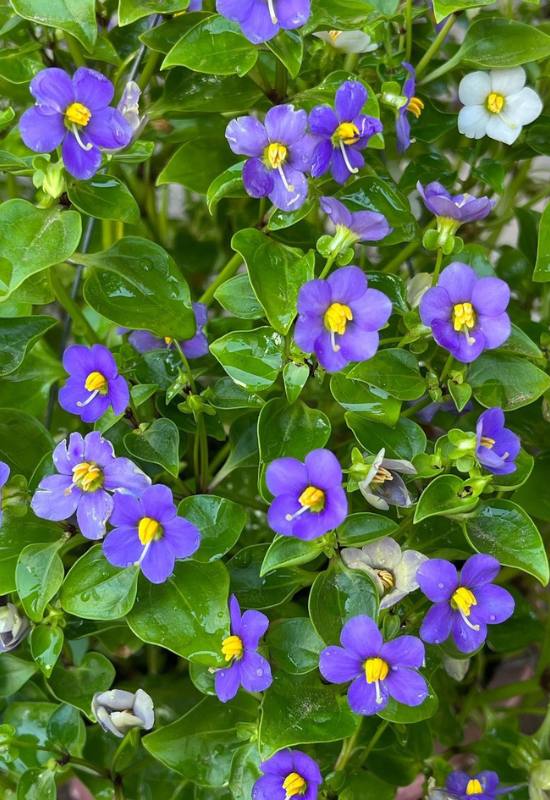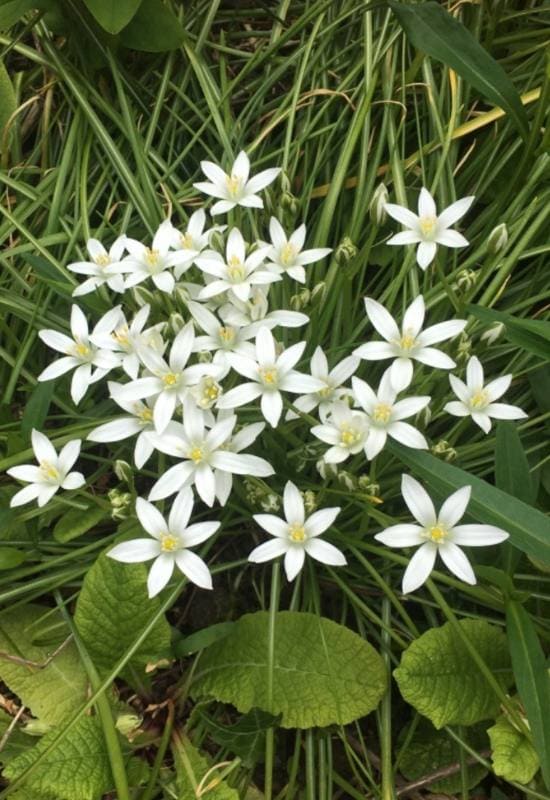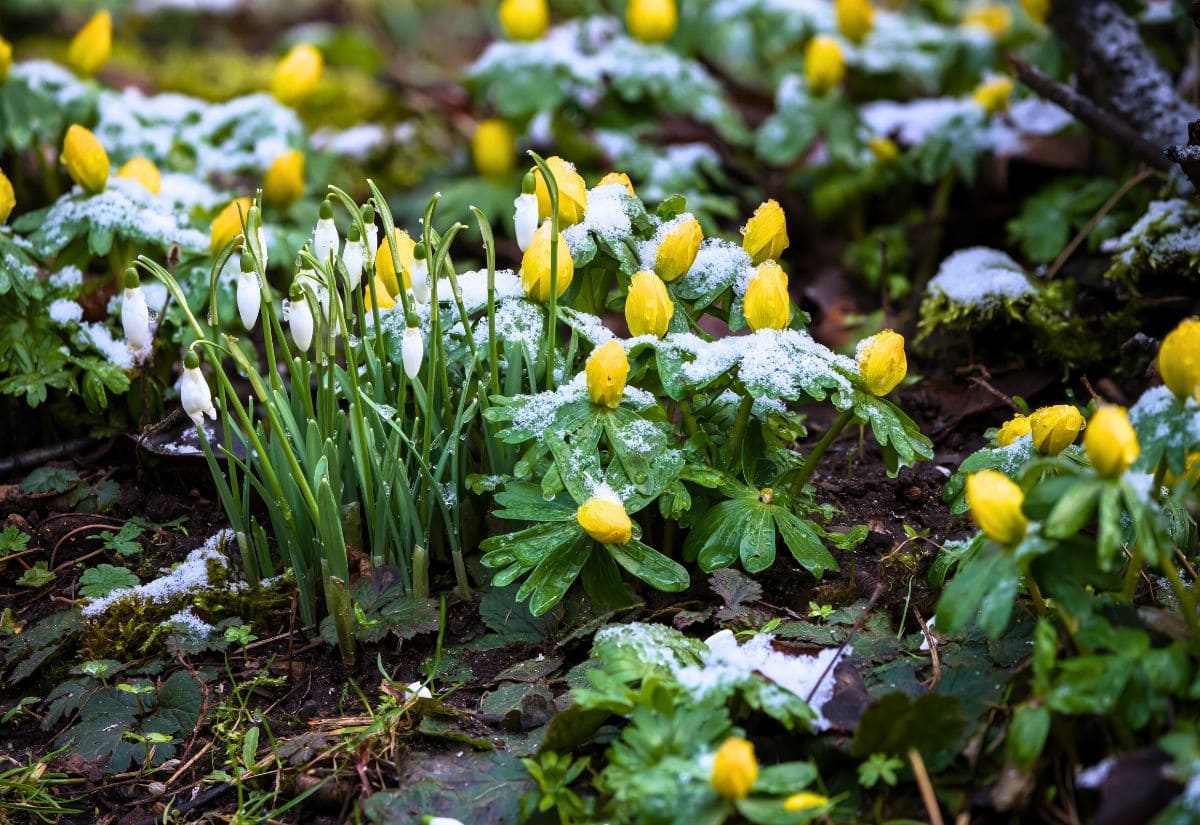
Winter is the hardest season to get plants in bloom, but there are a few bulbous varieties that open their beautiful flowers in this cold and snowy season, where gardens are often barren and lack sparks of interest and color!
Crocus, snowdrop and Algerian iris are some of them, and all you need to do to get your green space smiling with lovely blossoms is to plant the bulbs, corms, tubers and rhizomes at the right time.
Strange, bulbous perennials sometimes hurry in a race to be the first to blossom, and a few varieties can even beat early blooming daffodils and hyacinths!
To be honest, there are not many, but the range of shades is big enough, and some even have massive blooms; but we selected the only ones that will blossom in this unfriendly season, not in early spring, not in late fall, but in the depths of winter itself!
But before we look at them closely in turn, we need to make a few key points on when to plant the bulbs…
When to Plant Bulbs to Have Them in Bloom in Winter
For each variety of bulbous perennial on our list, you will get the exact timing, but there are two points to stress.
First of all, it depends on the climate; for example, most winter blooming bulbs will need planting in September or October, but if you live in a very cold region, don’t run risks of early frost and only plant them in September.
Then again, if you live in the Southern hemisphere, seasons are reversed. So, September becomes March, October becomes April etc…
And now, let’s see which bulbous perennials can brighten up your garden with their flowers in the midst of winter!
8 Bulbous Perennials That Flower In Winter
We checked all bulbous perennials available, and only 8 actually bloom in winter, and here they are…
1: Snowdrop (Galanthus nivalis)
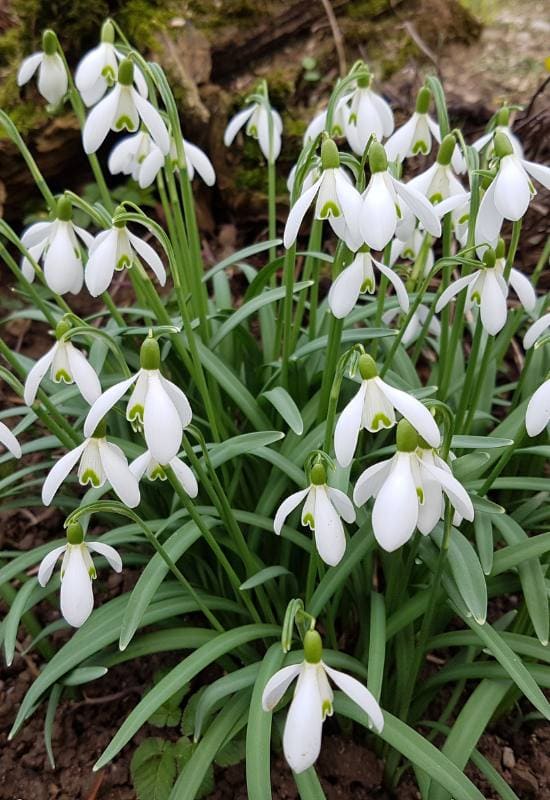
The first flowering bulb that springs to mind when we think about winter blooms is, of course, snowdrop. It has a reference to snow in both its common and scientific name (nivalis, or “of the snow”) for a reason.
Maybe it is also due to the candid white color of its nodding flowers, which also have that famous green dot on the little crown that you see between the spoon shaped petals…
They can literally pop out when the soil is still coated in it white mantle, late in winter, and they will announce spring as well, blossoming for weeks till about March.
Woodland looking and completely charming, they also have a slight fragrance if you get closed to them. The long and thin, fleshy and arching leaves give lovely tufts of greenery when the soil is still mostly barren.
Winner of the Award of Garden Merit by the Royal Horticultural Society, and with many varieties and cultivars, it will naturalize easily, and you will only need to plant them a few months before their floral display, in early fall (September or October at the latest).
2: Crocus (Crocus spp.)
Another late winter bulbous classic is the low and humble, but sweet looking crocus. It deeply cupped flowers will come out of the soil as early as February, and they can stay with you into the first weeks of spring.
Just plant the bulbs (corms, actually) in your flower beds or rock garden 6 to 8 weeks before the first frost, and they will look up to the bright sunlight with their luminous colors.
So many are the varieties and cultivars, including quite a few winners of the Award of Garden Merit by the Royal Horticultural Society, that it’s hard to choose.
‘Cream Beauty’ is an unusual one, as the name suggests, prize winner ‘Blue Pearl’ gives you pale lavender shades, ‘Ard Schenk’ snow white with a golden center, while ‘Yalta’ is bicolor, deep violet purple and a hint of fading sky blue…
The little needle like leaves will soon disappear after the blossom, only to come back with the next season.
Very easy to grow, crocus can naturalize very easily, as the bulbs multiply in the soil, and you can literally have whole large blankets of them in a matter of years, under trees and in wild areas. I have seen whole valleys covered in them in the Alps!
3: Winter Aconite (Eranthishyemalis)
Here’s another small tuberous perennial that fills whole areas under trees and has winter in both its names (hyemalismeans “of winter”), because it will decorate your garden from about February to March.
And it does so with a sea of bright golden yellow flowers with a cup shape, each reaching about 1.3 inches across (3.0 cm).
They are framed by a ring of long and narrow leaflets, like a saucer under them, which are actually leafy bracts.
But what you will mainly enjoy is the overall effect: the ground fills with energetic little blossoms that announce the sunny days to come.
The finely cut foliage, deep green in color, will keep your soil coated for a bit longer than the blossoms themselves, up to the end of spring.
To make sure that the tubers sprout, soak them over night, plant them in early fall, and leave them undisturbed.
Winter aconite is yet another perennial that spreads naturally and naturalizes easily. It is perfect for wild (looking) areas and self sufficient gardens, where it can form a large carpet of gold and green starting in late winter.
4: Algerian Iris (Iris unguicularis)
Rhizomatous Algerian iris will blossom all the way through winter, the whole of it! And not just… You will see its blossoms in late fall and early spring as well! And they are quite stunning.
With the typical and unusual shape of this genus, they are mainly pastel lavender blue, quite bright and luminous, but you can also get them in a deeper and stronger shade of mauve.
On the standards (the upper tepals) also have a blush of purple at the base, while the falls (the lower tepals) have a central patch with stripes on a white background, while the signal (the patch that becomes a beard in some varieties), is light to dark yellow, and it becomes a long line that arches with the petals.
The evergreen foliage of this winner of the Award of Garden Merit by the Royal Horticultural Society will also decorate your garden all year round.
Perfect for flower beds, rock gardens, banks and slopes but also containers, Algerian iris can be propagated by dividing the rhizomes and replanting them from mid summer to early fall when it is not in blossom.
5: Persian Violet (Cyclamen coum)
One of the most loved varieties of cyclamen, Persian violet, will start its delicate, elegant and enchanting floral display in late winter and it will continue into early spring. This us as long as you plant the brown tubers in late summer or early fall.
And it will do all the rest for you… The rosy purple (cyclamen, in fact, that’s the correct tonality) nodding flowers with reflexed petals (tepals) will hover a few inches above the ground on the slender and arching stems for weeks, with their vibrant energy and exquisite look.
The foliage will last longer, going to sleep late in the season, and it is excellent as ground cover, thanks to the deep hunter green heart shaped leaves with silvery dots on them that look like shelters for little crawling animals.
Yet another winner of the Award of Garden Merit by the Royal Horticultural Society, Persian violet has a classic cyclamen look, with a wild, rather than exotic bloom personality, they are small, compared with common houseplant varieties, but it naturalizes easily and it gives you the ideal underbrush look you want under trees.
6: Star of Betlehem (Ornithogalum dubium)
Despite the Christmas reference in its name, Star of Betlehem comes from South Africa, and it is becoming more and more popular as a houseplant or a bulbous perennial with winter blooms outdoor in warmer climates.
The inflorescences fill with lovely and bright orange, waxy flowers that reach about 1 inch across each (2.5 cm).
Resembling a “fat star”, they also display a dusting of dark brown at the center, a bit like you would find on poppies.
Rising far above the fleshy, deep green foliage that remains prostrate as a lovely and lush tuft underneath them, the floral display will last all the way to mid spring, much longer than many other bulbous varieties that flower in this season.
It has become readily available in shops since this recent newcomer to nurseries and general stores has won the Award of Garden Merit by the Royal Horticultural Society.
Showy and exotic looking, star of Betlehem has a different look from most other winter flowering bulbs, and you should plant it in fall for winter and spring blossoms, but you can also plant it in spring for flowers later in the season…
7: Amaryllis (Amaryllis spp.)
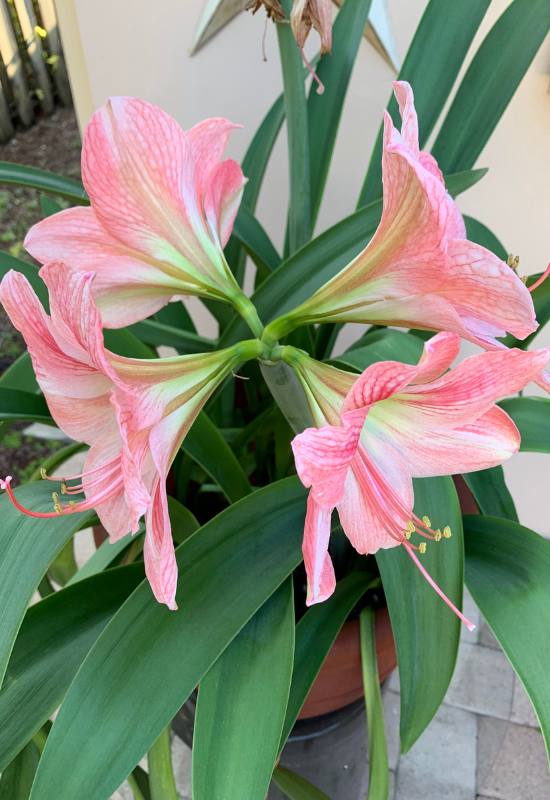
Amaryllis has one of the largest blooms of any bulbous plant, reaching about 10 inches across (25 cm)! And you can get it to blossom in virtually all seasons.
The trick is to plant the bulb (choose the largest for best results) about 6 to 10 weeks before you want it to send out the first leaves; in 4 to 6 weeks after that, you will get the massive flowers, star shaped in any shade of red, deep or crimson, pink or white, or bicolor, if you please. Orange and purple tonalities are now available with cultivars.
While it is common to have it for Christmas indoors, you can do the same outdoors as long as you live in a warm region. After that, allow the long, narrow and fleshy leaves to die off and cut it down to about an inch above the bulb itself.
Place it in a cool, dry and dark place, ready for a new exotic floral display when you wish, but do leave some time for it to rest. The actuals flowering season can be quite long, especially if you get more than one stem…
While Amaryllis is a winter indoor classic, it is very suitable for outdoor spaces as well, and it’s hard to match its big, brightly colored and very showy blossoms; it is especially suitable for exotic, tropical and Mediterranean gardens, or in containers.
8: Crocus Fleischeri (Crocus fleischeri)
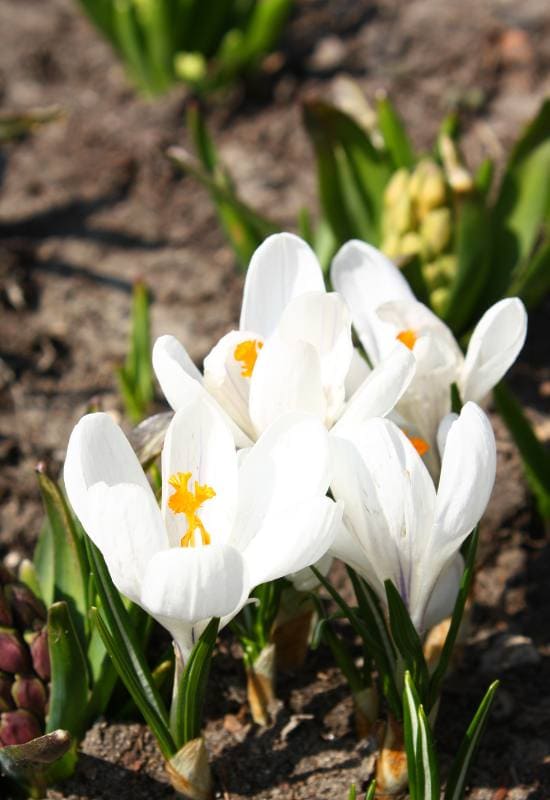
This bulbous (cormous) perennial for winter blooms is still in the Crocus genus, and it does not even have a common name, so we can only call it Crocus fleischeri, with its binomial and scientific term. But it is so different from other, more common varieties, that it deserves its won spotlight.
The blooms will come in February and March, and they are quite open and star shaped. Snow shite with golden and bright orange reproductive organs in display, as well as a yellow “halo” in the center, but sometimes in other colors too, they have long and narrow petals, and they are about 1.3 inches across (3.0 cm).
The blooms will face up to the sky from low down, near ground level, and they look lovely in little groups.
You will only see a few thin and long, dark green and needle like leaves at the base. You will need to plant it in fall, to make sure that they are ready for January or February.
Native of Greece and Turkey, Crocus fleischeriwill naturalize easily and spread spontaneously on your land, but you need a warm, Mediterranean like climate for it to thrive, because it is far less cold hardy than other varieties.
Break the Cold of Winter with Bulbs That Flower When Few Other Plants Do!
So, here are the only bulbous perennials that will really bloom in winter, not “just before” or “just after”; the sad news is, they are only a few. The good news is that they are very beautiful and all very easy to grow!

Written By
Amber Noyes
Amber Noyes was born and raised in a suburban California town, San Mateo. She holds a master’s degree in horticulture from the University of California as well as a BS in Biology from the University of San Francisco. With experience working on an organic farm, water conservation research, farmers’ markets, and plant nursery, she understands what makes plants thrive and how we can better understand the connection between microclimate and plant health. When she’s not on the land, Amber loves informing people of new ideas/things related to gardening, especially organic gardening, houseplants, and growing plants in a small space.

